[notes of baristas in front street] are different coffee producing areas in Kenya sour?
Is it true that some friends said that Kenyan coffee beans taste like tomato juice? So the editor brought two Kenyan AA beans from different producing areas to compare, they are from Kiambu producing area and Qilin Yaga (Kirinyaga). Needless to say, follow the editor to see the comparison of their basic information and baking methods!
Raw bean information
[Kenya AA Qianbu (Kiambu)]
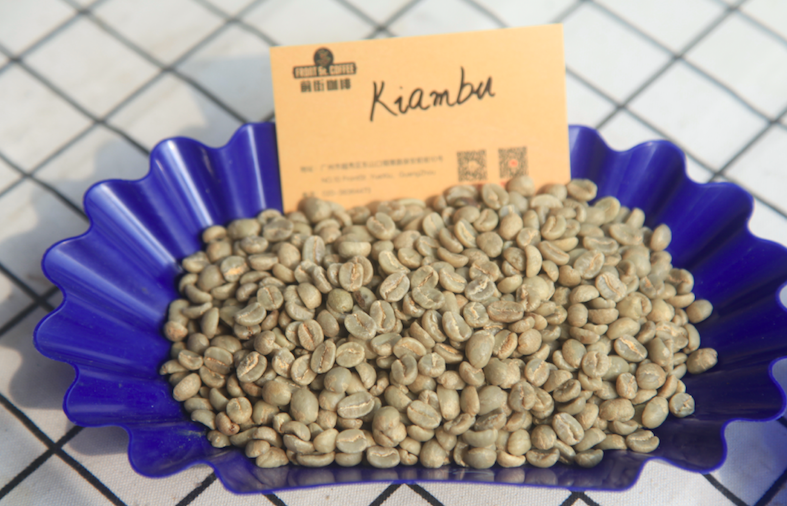
Origin: Qianbu Kiambu producing area, Kenya
Altitude: 1500-2000 m
Variety: SL28
Treatment method: washing treatment
[Kenya AA Kirin Yajia (Kirinyaga)]
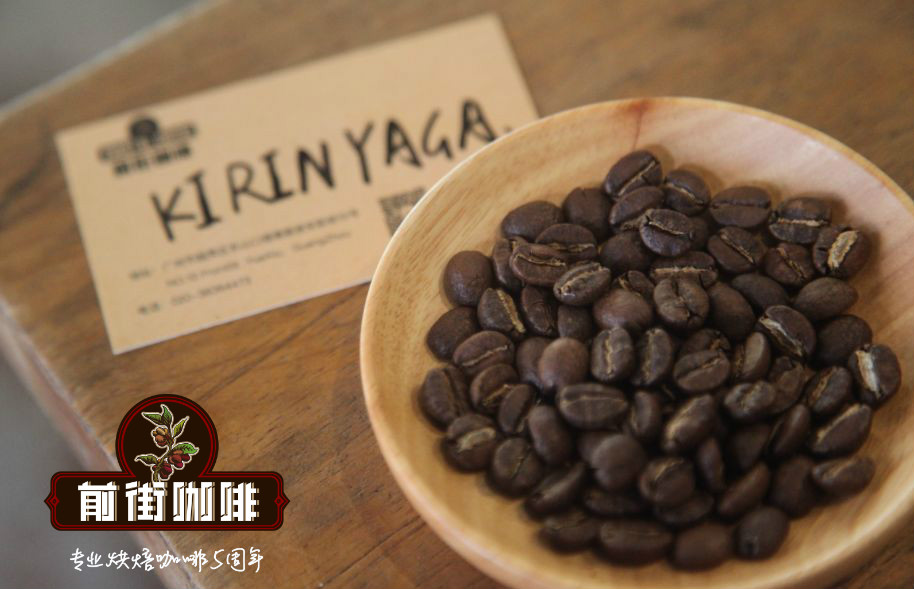
Producing area: Kirin Yajia kirinyaga, Kenya
Altitude: 1500-1900 m
Variety: SL28 & SL34
Treatment: washing treatment
In terms of raw beans, both beans are washed, so there is more silver skin left on the bean surface. [Kiambu] the bean variety is SL28, which looks like an oval shape with a relatively uniform particle size, gray and a little dark green on the color, and smells like grass green. The beans in the Kirinyaga producing area of Kirin may have a uniform grain size because they are composed of SL28 and SL34, but some oval shapes are longer and some are shorter, and the color is gray and yellowish, with a faint citrus smell.
Comparison of baking techniques
[Kiambu producing area]
Roaster Yangjia 800N (baking capacity 300g)

The furnace temperature is 170℃ and the firepower is 100. the throttle is opened at 390 ℃, and the firepower remains unchanged. When the furnace temperature is 149℃, the bean meter turns yellow, the grass smell disappears completely, and enters the dehydration stage.
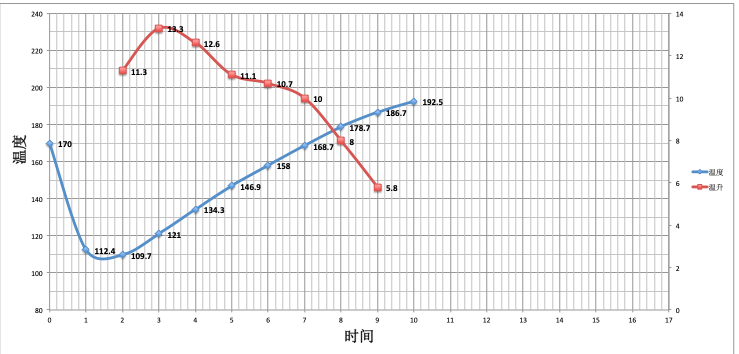
7: 14 "after dehydration, the firepower and throttle remain the same." 7: 30 "is the appearance of wrinkles and black markings on the bean table, and the smell of toast changes to coffee, which is a prelude to an explosion. At 8 '20`, the blast begins, the throttle opens 4, and the firepower is reduced to 50. After an explosion, the development time is 1: 50 ". At 188 ℃, the firepower is reduced to 30, and the temperature rises to 193.3 ℃.
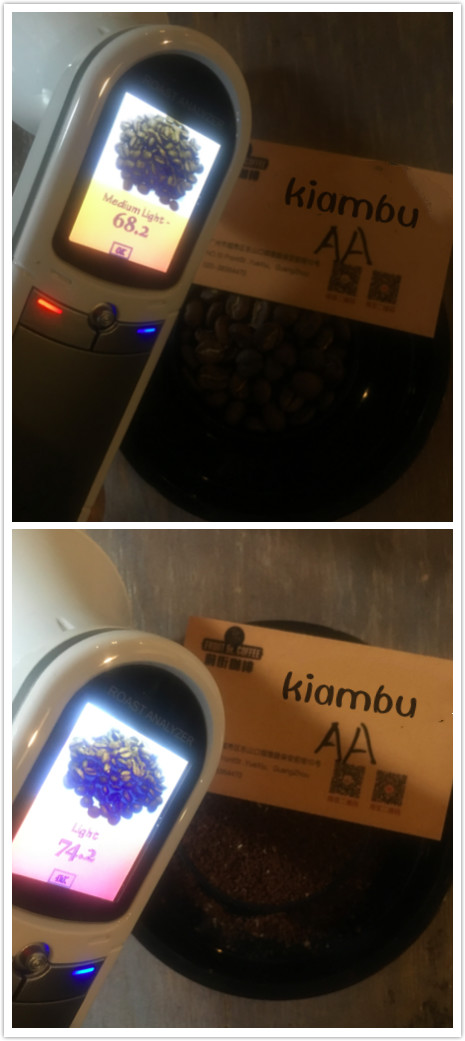
Agtron bean color value 68.2 (above), Agtron pink value 74.2 (bottom image), Roast Delta value 6.
[Qilin Yajia (Kirinyaga) producing area]
Roaster Yangjia 800N (baking capacity 300g)
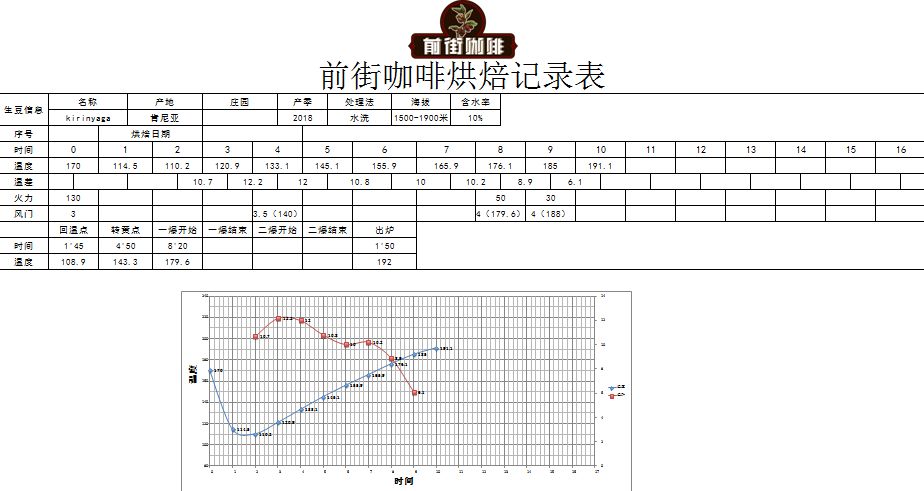
The furnace temperature reaches 170℃ into the pot, the throttle opens 3, the firepower is 100,140 ℃, the air door opens to 3.5; when the furnace temperature is 143.3 ℃, the bean watch turns yellow, the grass smell disappears completely, and enters the dehydration stage.

The smell of toasted bread has obviously changed to the smell of coffee, which can be defined as a prelude to an explosion. At this time, it is necessary to listen clearly to the sound of the explosion point, to the sound of the explosion point, adjust the firepower to 50, adjust the throttle to 4 (the firepower should be very careful, and not be so small as to be free of bursting sound), and develop a burst point after the development of 1 cup 39 blown 50 ", 192 degrees out of the oven.
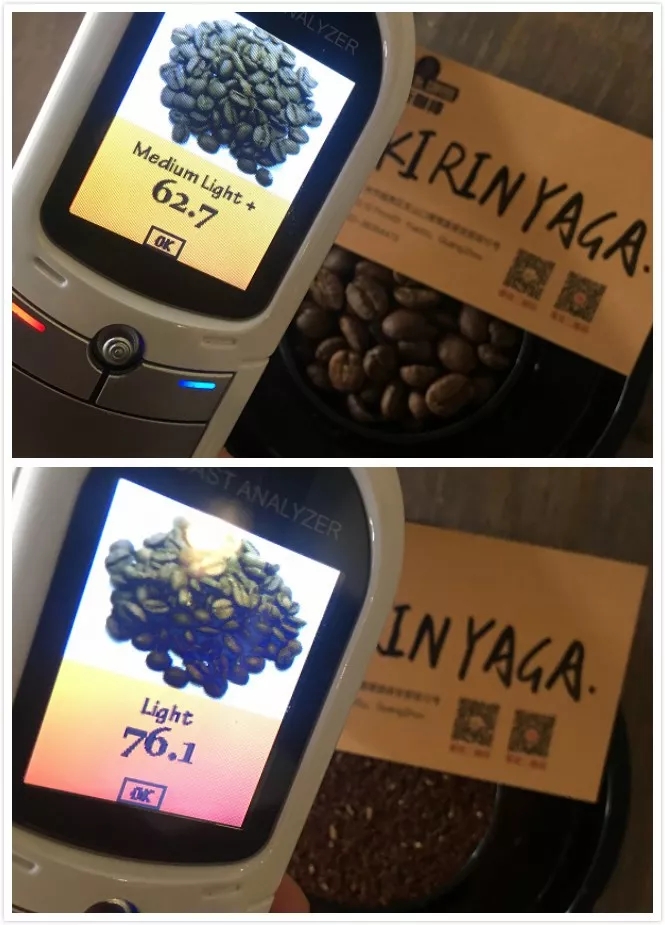
Agtron bean color value 62.7 (above), Agtron pink value 76.1 (bottom), Roast Delta value 13.4
From the point of view of baking, the curves of the two beans are similar, and the temperature of the beans is also similar. Let's take a look at the cup test.
Comparison of cup test reports
[Kiambu producing area]
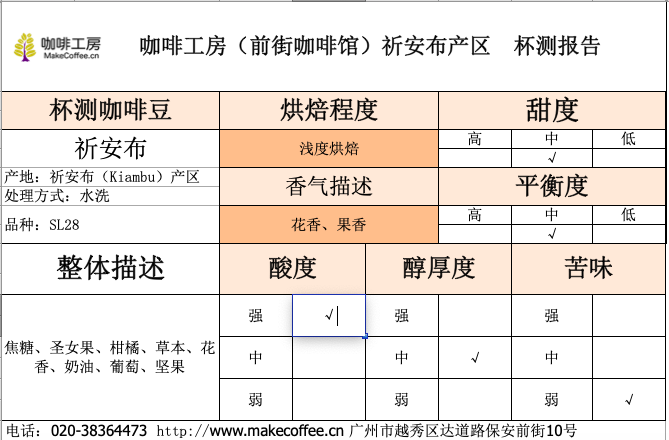
[Qilin Yajia (Kirinyaga) producing area]

Comparison of brewing and cooking
[parameter & method] medium and fine grinding: grind degree BG 5R (Chinese standard No. 20 sieve pass rate 58%), water temperature 90 ℃, powder / water ratio 1:15, stage extraction, total extraction time 1mm 39 × 55 "(try to be consistent in manipulation)

[Kiambu producing area] Flavor:
Nuts, cream, lime, virgin fruit, almonds, vanilla, herbs, caramel, the overall taste is more mellow.
[Kirin Yajia (Kirinyaga) producing area] Flavor:
Lemon, flower, tomato, citrus, sugar, raspberry, herb, cream, the overall taste is relatively refreshing.
After a short comparison, it is found that the basic flavors of [Kiambu] and [Kirinyaga] are also the sweet and sour feelings of herbs, tomatoes and virgin fruits, even under similar baking techniques, but their flavors are quite different. [Kiambu] feels more mellow and nutty, while [Kirinyaga] is clearer and more sour.
Important Notice :
前街咖啡 FrontStreet Coffee has moved to new addredd:
FrontStreet Coffee Address: 315,Donghua East Road,GuangZhou
Tel:020 38364473
- Prev
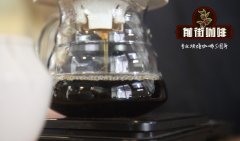
What are the characteristics of the hot Rosa coffee? How should Rosa coffee taste good?
Professional coffee knowledge exchange more coffee bean information please follow the coffee workshop (Wechat official account cafe_style) tea has the best, coffee also has. Some people love Kona, Hawaii, the Japanese bought out the blue mountains of Jamaica, and the legendary cat shit. In the last decade, the hottest boutique coffee in the West should be Rose Summer Coffee, which is famous for its sweet fruit. Rose
- Next

Different definitions of Flat White | how is the proportion of Flat White different from that of lattes?
Professional coffee knowledge exchange more coffee bean information please follow the coffee workshop (Wechat official account cafe_style) commonly known as Xiaobai Flat White has been on the menu of many boutique coffee shops for some time, but do you know what it is? And what's the difference between a Flat White and a latte? Let's take a look at the history of Flat White, how to make it, and Flat W.
Related
- Detailed explanation of Jadeite planting Land in Panamanian Jadeite Manor introduction to the grading system of Jadeite competitive bidding, Red bid, Green bid and Rose Summer
- Story of Coffee planting in Brenka region of Costa Rica Stonehenge Manor anaerobic heavy honey treatment of flavor mouth
- What's on the barrel of Blue Mountain Coffee beans?
- Can American coffee also pull flowers? How to use hot American style to pull out a good-looking pattern?
- Can you make a cold extract with coffee beans? What is the right proportion for cold-extracted coffee formula?
- Indonesian PWN Gold Mandrine Coffee Origin Features Flavor How to Chong? Mandolin coffee is American.
- A brief introduction to the flavor characteristics of Brazilian yellow bourbon coffee beans
- What is the effect of different water quality on the flavor of cold-extracted coffee? What kind of water is best for brewing coffee?
- Why do you think of Rose Summer whenever you mention Panamanian coffee?
- Introduction to the characteristics of authentic blue mountain coffee bean producing areas? What is the CIB Coffee Authority in Jamaica?

